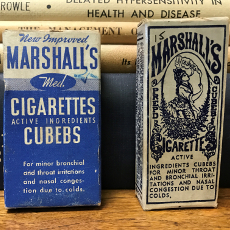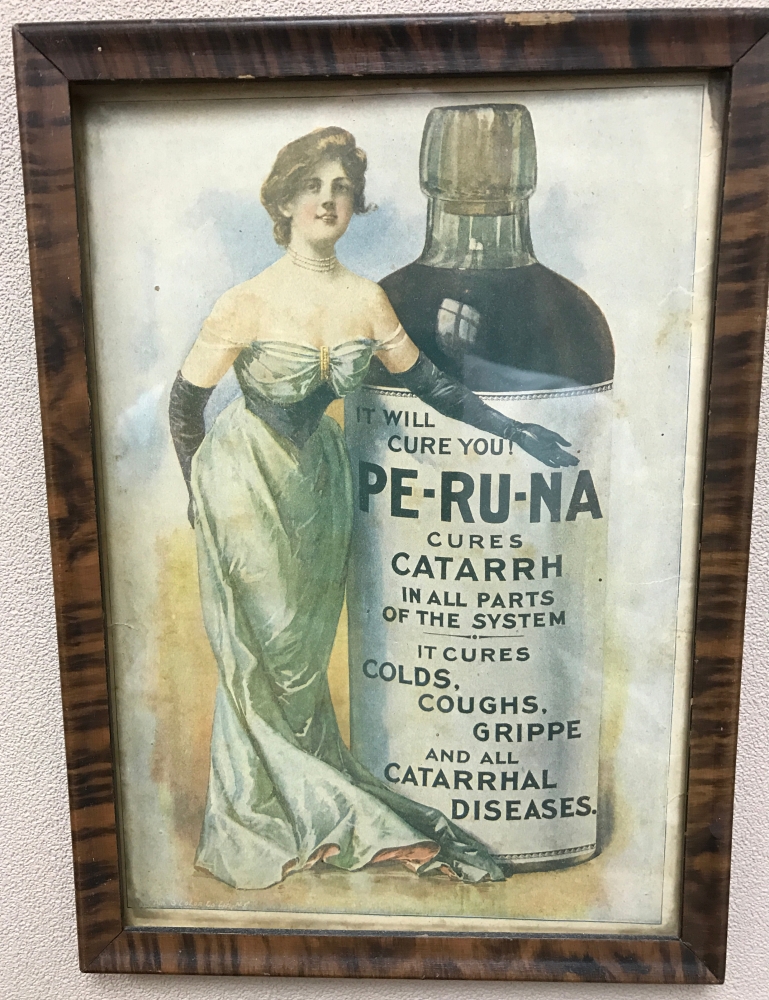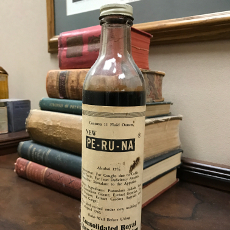 As we celebrate our 75th anniversary, we want to look back at some of the medicines available before and during our early years. A lot has changed – from the days when cubeb cigarettes were recommended for bronchitis to present times with access to advanced, personalized treatments like biologics. And part of what helped that change was the formation of the College, which legitimized allergy as a specialty and created a place where members could share scientific research and step up to protect patients.
As we celebrate our 75th anniversary, we want to look back at some of the medicines available before and during our early years. A lot has changed – from the days when cubeb cigarettes were recommended for bronchitis to present times with access to advanced, personalized treatments like biologics. And part of what helped that change was the formation of the College, which legitimized allergy as a specialty and created a place where members could share scientific research and step up to protect patients.
Before the College came to be, the American public often treated their ailments by choosing something from the wild west of patent medicines. These concoctions were over-the-counter “treatments” that were advertised heavily with no regard to their actual effectiveness.
These medicines ranged from innocuous things like Anogstura bitters (great for a cocktail but not much else) to substances that were actually harmful like opium and cocaine. Between their wacky marketing and strange ingredients, they can remind one a little of the type of cures Pliny the Elder used to peddle for things like asthma – just mix up the blood of wild horses with some wine, and you’ll be breathing free and clear!
A rather infamous patent medicine has some strange ties to allergy and asthma – Peruna, which eventually came to be known as a “prohibition tonic.” These tonics were basically ways to skirt around the law but still imbibe, and Peruna was the most popular of all. And no wonder – it started out with an alcohol by volume (ABV) of around 28%. Quite a kick.
 To avoid being subject to anything troublesome and illegal, prohibition tonics had to advertise themselves as a cure for, well, something. Peruna was claimed to cure the dreaded “catarrh” – a buildup of mucus caused by anything from bronchitis to rhinitis.
To avoid being subject to anything troublesome and illegal, prohibition tonics had to advertise themselves as a cure for, well, something. Peruna was claimed to cure the dreaded “catarrh” – a buildup of mucus caused by anything from bronchitis to rhinitis.
Samuel Brubaker Hartman, MD, created Peruna in 1877, and it contained spirits, water, some flavoring, and burnt sugar for color. There were other catarrh cures on the market, but Dr. Hartman had a rather clever twist to his marketing plan. “Hartman’s particular genius was in defining catarrh as the root cause of virtually all known diseases,” writes Jack Sullivan in his article “The Peruna Story: Strumming That Old Catarrh” for the Federation of Historic Bottle Collectors. “For Hartman — and his advertising — pneumonia was catarrh of the lungs, so was tuberculosis. Cancer [sic] sores were catarrh of the mouth; appendicitis, catarrh of the appendix; chronic indigestion, catarrh of the stomach; mumps, catarrh of the glands; Bright’s disease, catarrh of the kidneys.”
Dr. Hartman started raking in the profits. He may have continued to amass wealth well into the 1900s, but he had an encounter with muckraking journalist Samuel Hopkins Adams who was working on a series of 11 articles about patent medicine in 1904 for Colliers. During Dr. Hartman’s interview, “[He] freely admitted to Adams that Peruna did not cure anything,” writes Sullivan. “There are no such things as cures, he told a flabbergasted Adams. Rather, he said of his clientele: “They see my advertising. They read the testimonials. They are convinced. They have faith in Peruna. It gives them a gentle stimulant, and so they get well.” The article with Dr. Hartman, plus the publication of Upton Sinclair’s The Jungle, were so shocking that Congress decided to step in and take action, passing the Pure Food and Drug Act of 1906. This was the law that gave birth to the Food and Drug Administration (FDA) – and was death for many in the patent medicine business.
 Peruna, however, survived. Dr. Hartman’s son-in-law took over the business, and his work officially branded the beverage as a prohibition tonic rather than medicine. With states going dry and advertisements carrying Peruna’s name far and wide via radio, profits soared. But alas, it couldn’t go on forever – once Repeal Day came, people no longer had a need for Peruna, and it was eventually gone from the market in the early 1940s.
Peruna, however, survived. Dr. Hartman’s son-in-law took over the business, and his work officially branded the beverage as a prohibition tonic rather than medicine. With states going dry and advertisements carrying Peruna’s name far and wide via radio, profits soared. But alas, it couldn’t go on forever – once Repeal Day came, people no longer had a need for Peruna, and it was eventually gone from the market in the early 1940s.
And this, believe it or not, is where the College comes in. Founded in 1942 by Frederick Wittich, MD, the College was created to foster scientific integrity in the specialty and to protect patients. “Why a College?,” one of the first articles to appear in the Annals of Allergy, Asthma and Immunology, explained Dr. Wittich’s reasoning. So, you might ask – why a College?
- The establishment of an organization of qualified medical men and scientists of good standing who shall meet from time to time for the purpose of promoting and advancing the study, research and clinical knowledge of allergy as it applies to the various specialties in medicine.
- To maintain and advance the highest possible standards among those engaged in the practice of allergy.
- To perpetuate the best traditions of medicine and medical ethics; to establish standards for the qualification, and procedure for the certification of men engaged in the specialty of allergy.
- To maintain the dignity and efficiency of this specialty and its relation to public welfare.
- To promote friendly intercourse among those engaged in the practice of allergy.
In short, to create a great group of folks who could share scientific ideas, advance the specialty, and help educate the public against quackery like Peruna. Of course, we don’t know if Dr. Wittich even knew about Peruna, let alone created the College as a result – but his desire to promote only the best science and protect the public is right in line with the same thinking that led to the FDA.
75 years later, and our mission hasn’t changed much. The College strives to be the leading advocate for allergists, to offer the premier event in education each year, to be the best in consumer education, and to excel at connecting College members. Our public website helps educate potential patients about the value of seeing an allergist for their care. To help people understand that they shouldn’t just treat their ailments with various OTC remedies. That real relief is waiting in the allergist’s office.
Many thanks to J. Allen Meadows, MD, FACAAI, for the inspiration and photos of Peruna from his personal collection of allergy and asthma antiques! Do you have any interesting old treatments from times past, or colorful memories about leaders of the College? Let us know!
